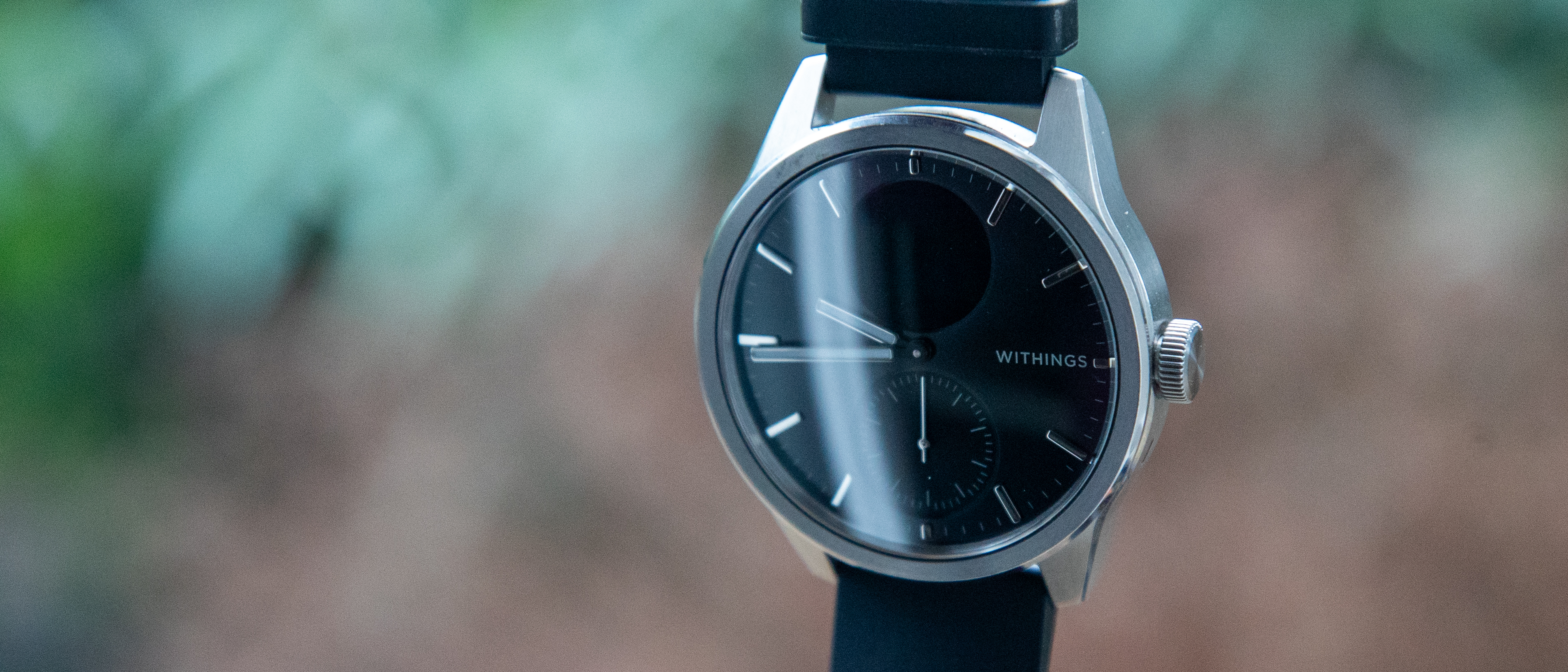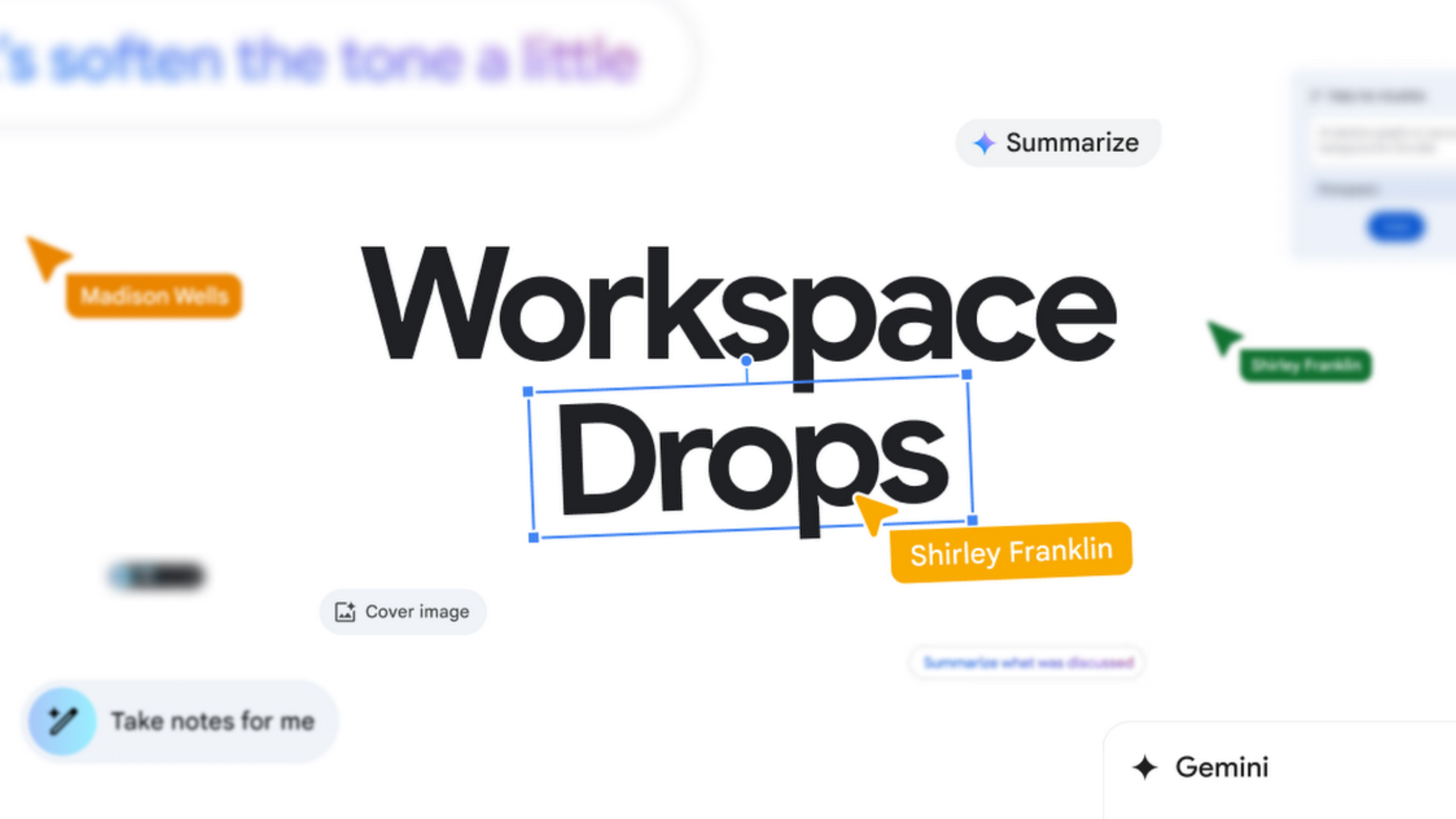Android Central Verdict
This hybrid smartwatch doesn't put much emphasis on the "smart" side of things, focusing more on health data and basic fitness tools. If you rarely use your smartwatch's apps and want basic notifications and epic battery life packaged inside a classic, stylish watch design, then the ScanWatch 2 may be the watch for you. That said, it comes with a few key downsides you should know of before buying one.
Pros
- +
Attractive, classic design with blended-in display
- +
Fantastic battery life
- +
Useful health & wellness data, esp. skin temp & heart health
- +
Great companion to Withings smart scales
Cons
- -
Heavier than it looks, especially while sleeping
- -
Tiny display limits information
- -
Haptics are hit-or-miss
- -
Sleep data inaccuracies
- -
App pushes pricey subscription
Why you can trust Android Central
Hybrid smartwatches feel like a dying race, making the Withings ScanWatch 2 a rare breed. Fossil is no longer in the game after exiting the smartwatch market in 2024. Aside from Garmin's more sporty hybrids, Withings remains the only company worth looking at in the hybrid space for classic style.
Both Wearables lead Michael Hicks and I (Derrek Lee, Android Central's managing editor) received ScanWatch 2 units months ago, pairing with our respective Withings smart scales. But a busy 2024 full of more exciting smartwatch and ring tech made the subtle ScanWatch fall to the wayside.
As fans of Withings products, though, we wanted to give the ScanWatch 2 a fair shake, so we finally made a point of testing the watch throughout December and early January.
Does the Withings ScanWatch 2 have what it takes to keep hybrid smartwatches relevant, or will consumers move on to smart rings for even more subtle health tracking? Based on our time testing the ScanWatch 2, your impression of it will truly come down to whether you care more about style or substance.
Withings ScanWatch 2: Price, availability, & models
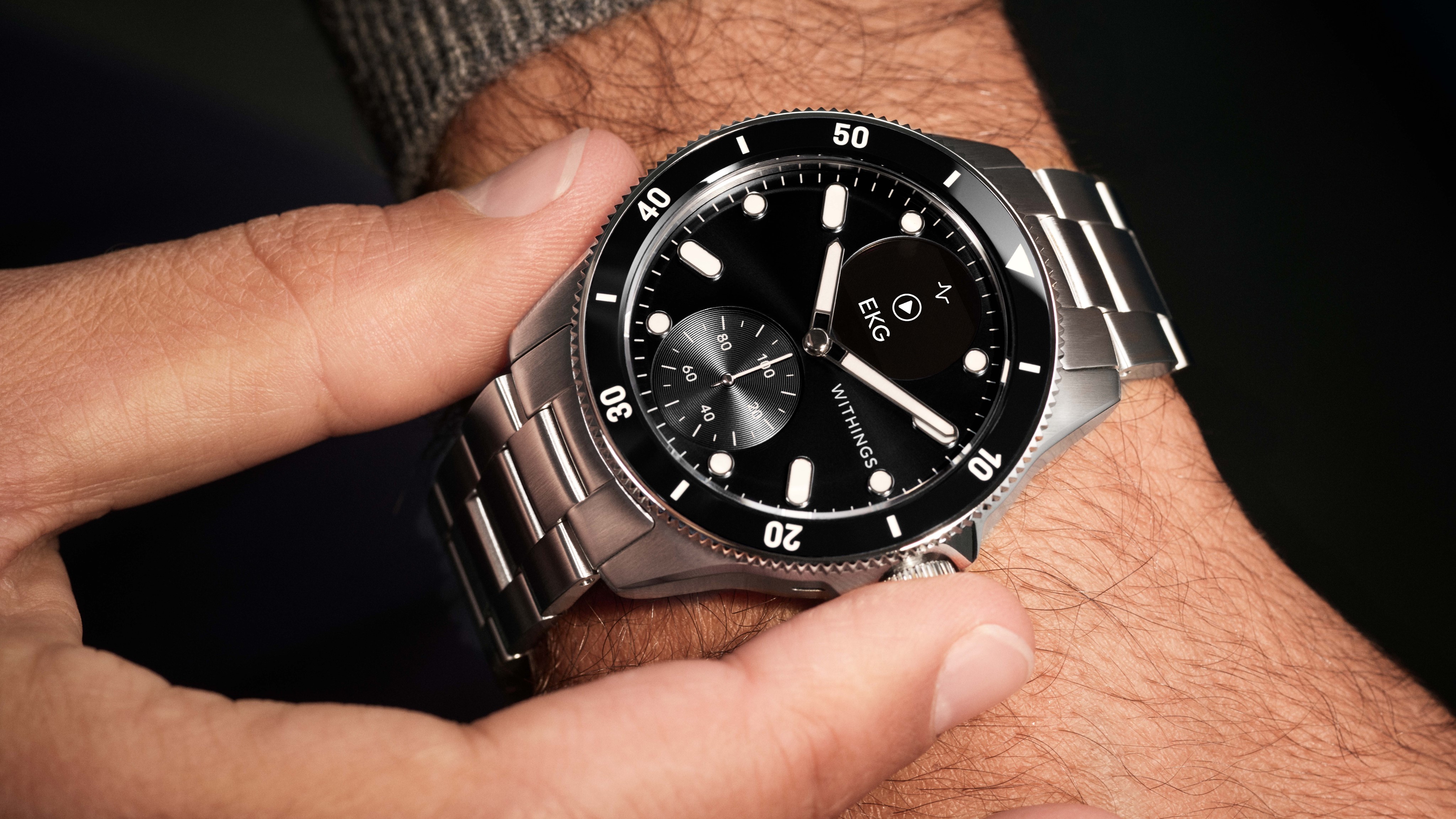
The Withings ScanWatch 2 comes in 38mm and 42mm case sizes. Both ship in Black or Pearl White, while only the 38mm has Blue and Sand color options. All of them ship with a fluoroelastomer band; Withings sells other Leather, Premium Sport, and Metal options that cost anywhere from $39 to $89 each.
All Withings ScanWatch 2 models cost $349.95. It comes with a three-month subscription to Withings Plus, which shows a Health Improvement Score, Cardio Check-Up, and unique recipes and workouts. After the free trial, it costs $9.95/month or $99.95/year.
Withings has also released the ScanWatch Brilliant and ScanWatch Nova for $599; both are essentially classier siblings of the ScanWatch 2. They have the same HealthSense Gen 3 sensor suite, stainless steel 316L case, 0.63-inch OLED cutout display, prolonged battery life, and general health, sleep, and activity insights. The Nova has 10ATM resistance and a better anti-reflective coating for water sports, while the Brilliant has a Titanium bezel and special steel hands.
Since you're looking at a hybrid watch for style over smarts, you may choose the Brilliant or Nova over the default ScanWatch 2, knowing the experience we outline below will be the same for you.
| Category | Withings ScanWatch 2 |
|---|---|
| Dimensions | 38 x 38 x 10mm; 42 x 42 x 10mm |
| Weight (w/out strap) | 38mm: 34.6g; 42mm: 52.6g |
| Display | 0.63-inch grayscale OLED, 14504 px (282ppi) |
| Materials | Stainless steel case/ crown |
| Protection | 5ATM; sapphire glass |
| Battery | Up to 30 days |
| Sensors | Multi-wavelength PPG 16 channels, High Dynamic Range Accelerometer, TempTech24/7 Module, Altimeter |
| Connectivity | BLE |
| OS & apps | Android 9 / iOS 15; Apple Health and Google Health Connect apps |
| Key stats | Daily HR, high/low HR warnings; ECG readings (AFib); Sleep quality/ stages/ duration/ regularity; blood oxygen, respiratory rate; Cycle phases/ length, period log, symptoms and flow trends |
| Workout stats | HR zones, VO2 Max estimate, active minutes, steps, burned calories, elevation, connected GPS |
Withings ScanWatch 2: What we liked
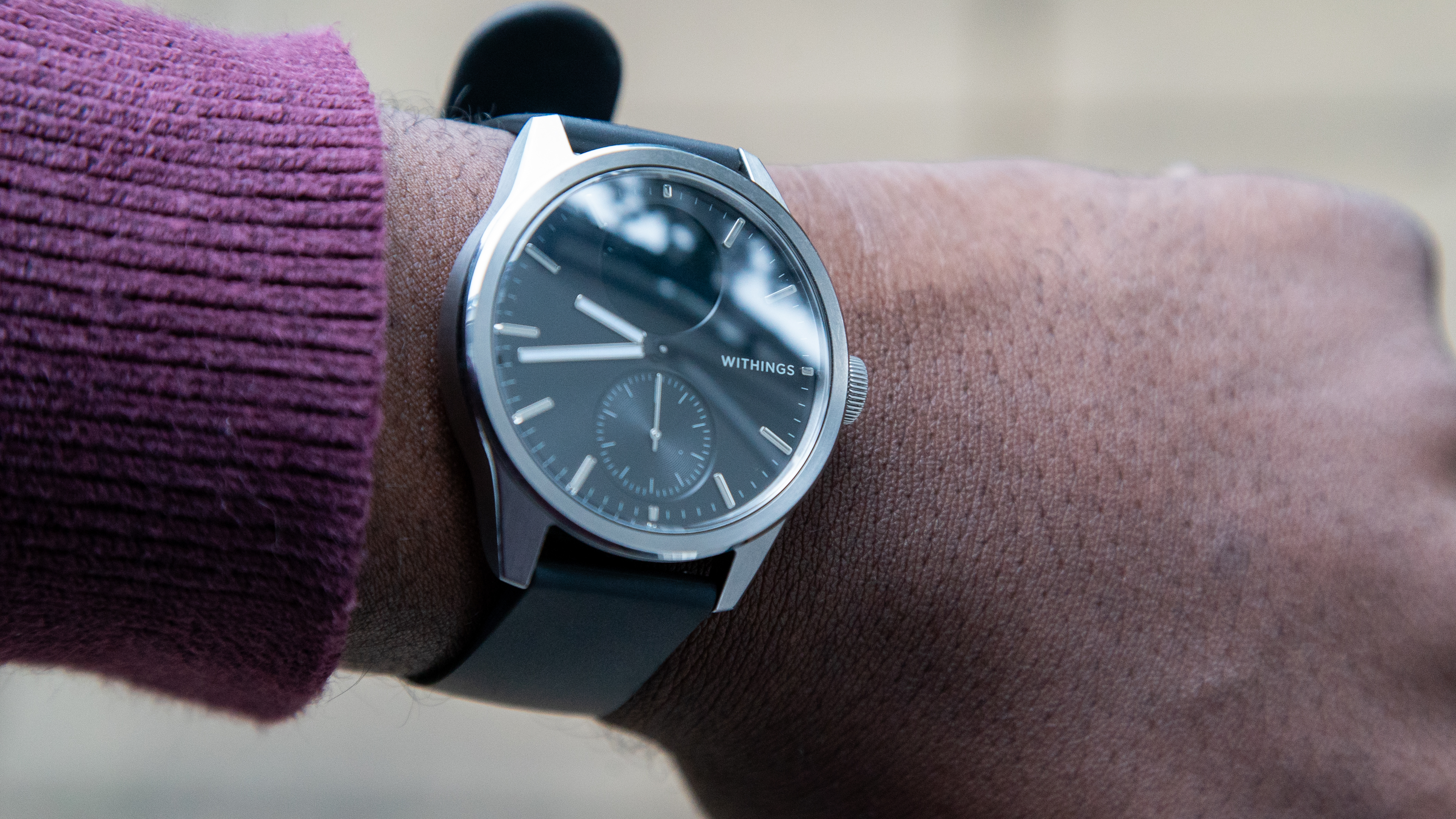
Off the bat, this is a gorgeous watch. The circular stainless steel case and sapphire glass give the watch a timeless look, one that many smartwatches try to emulate with varying success. Of course, a big part of this is the fact that this is mostly a standard watch with no touch screen, physical watch hands, and a rotating crown (more on that later). Anyone looking at the ScanWatch 2 wouldn’t think that this does anything but tell time.
I’ve actually gotten quite a few compliments on the watch, something that rarely happens when I wear my admittedly very good-looking Pixel Watch 3 or even a Galaxy Watch. And when Michael showed non-techy family members over a dozen smartwatches over the holidays, nearly all of them picked the ScanWatch 2 as their favorite, with some saying it's the only one they'd ever wear.
Unlike a "normal" watch, the ScanWatch 2 has a small circular cutout at the top for a basic, monocolor display. Given its small size, interactions are quite limited, but Withings does a fairly good job of keeping things concise enough to discern individual settings.
Watch hands cover up the display depending on the time, but since there's no always-on display setting, it doesn't matter; the hands automatically move aside if you interact with the crown to scroll through the menu.
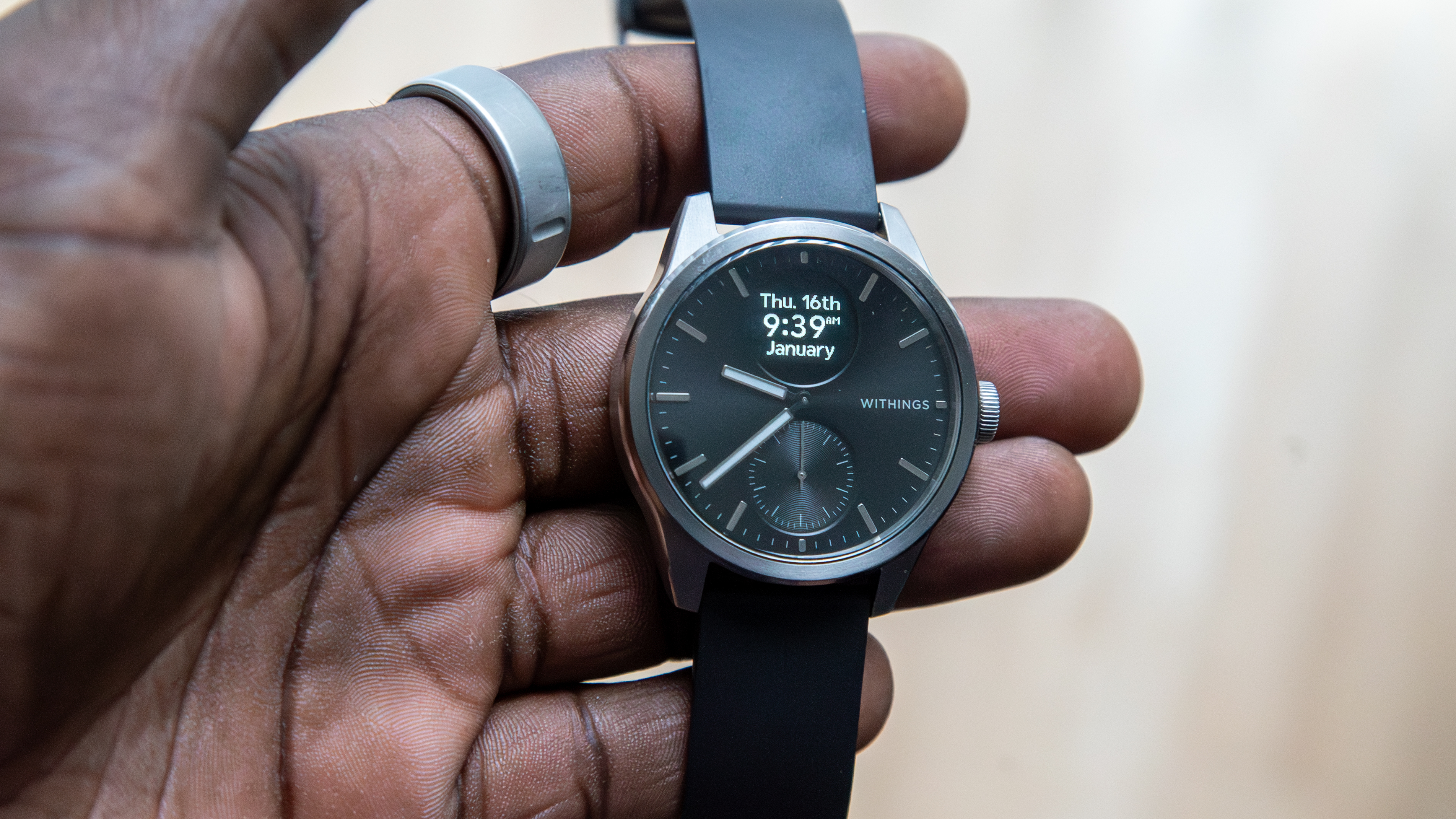
Perhaps the best part about using the display is the haptic feedback you get when you scroll to another option. It’s quite subtle, but it makes me think about the haptics on the Pixel Watch 3 and reminds me just how important good haptics are.
Cycling through the menu presents you with up to 14 customizable options, which can be changed in the app. This includes steps, body temperature, ECG, SpO2, and more. Given how small the display is, Withings makes it so that you don’t have to interact with various levels of submenus in each option, which works in its favor. In fact, only a few options have submenus, with most just there to display data like steps or heart rate without you needing to do anything.
You also have the option to set a shortcut when you press and hold the crown, which I like to set to workouts since it’s about the only thing I do with the ScanWatch 2 aside from checking the time. Anything especially complicated is relegated to the app, with the extra screen space and easier controls.
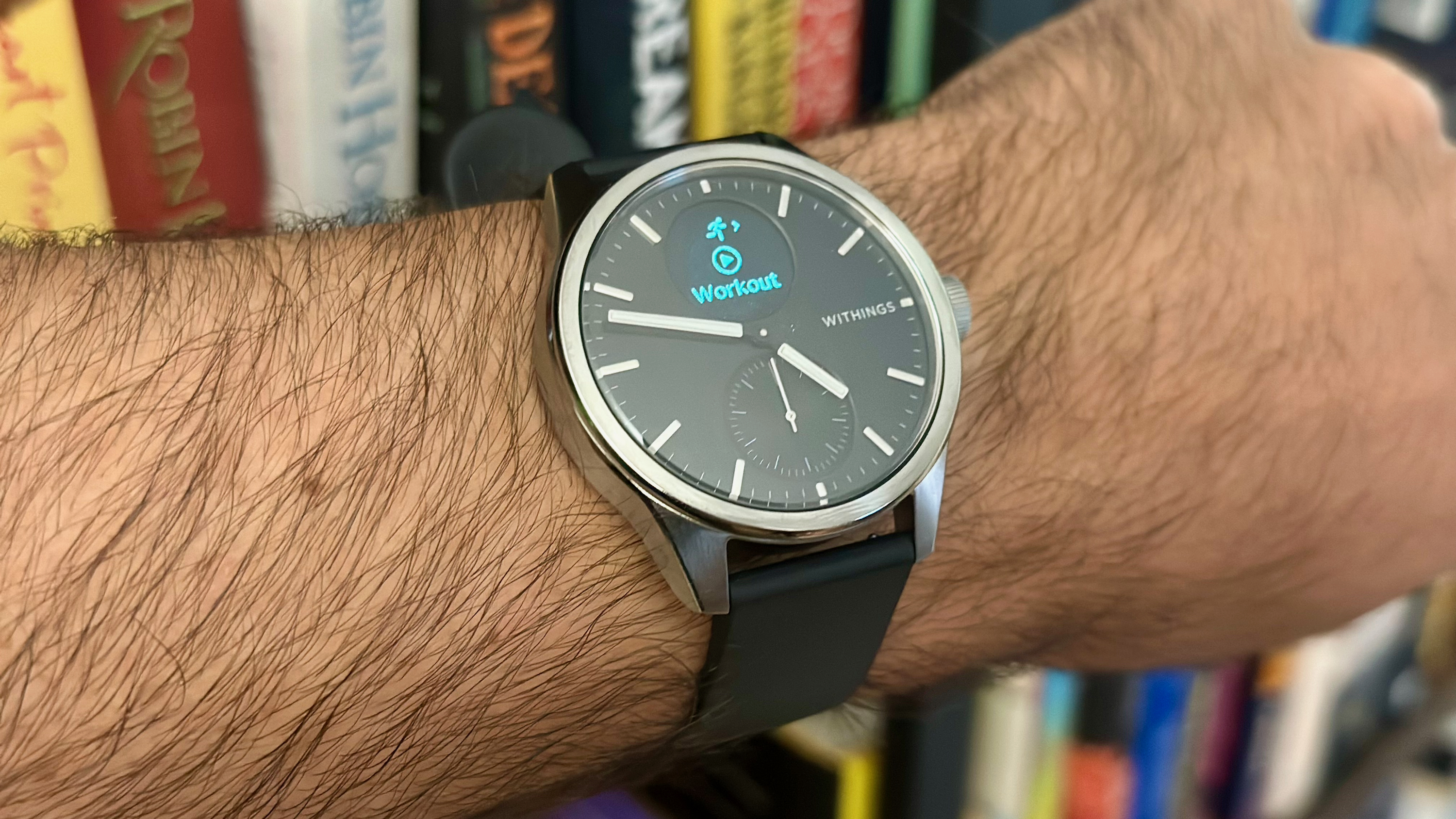
This is not a fitness watch by any means. There are some workout options in the watch, which you can also customize in the app, but the Withings ScanWatch 2 is more of a passive health watch than anything, with automatic workout detection for a few mainstream activities and manual workout starts in the app. And it requires your phone on hand for connected GPS.
After a run, Withings will show an interesting baseline of data, including distance, pace, calories, elevation, heart rate zones, body temperature changes, and temp zones. The last two are especially rare, outside of expensive body temp sensors, giving you a unique look at your level of effort.
There's a lot of missing data for athletes that we'll discuss in the next section, but at the very least, the heart rate average is fairly accurate for normal workouts, coming within 1 bpm of a heart rate strap during a run. During another run, it randomly showed a heart rate of 30 bpm above Michael's actual rate for a couple of minutes at the start but then auto-corrected to the correct rate.
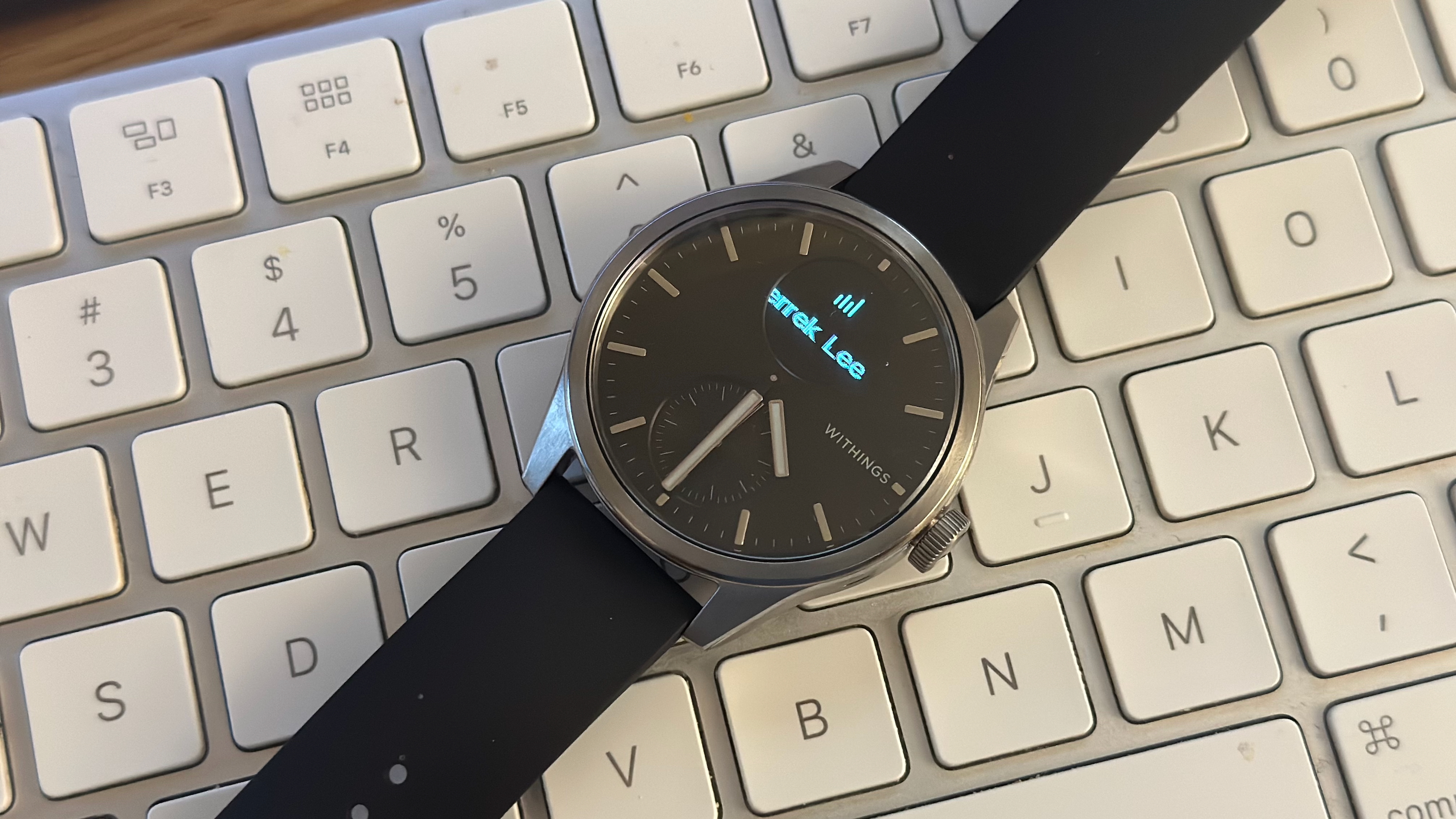
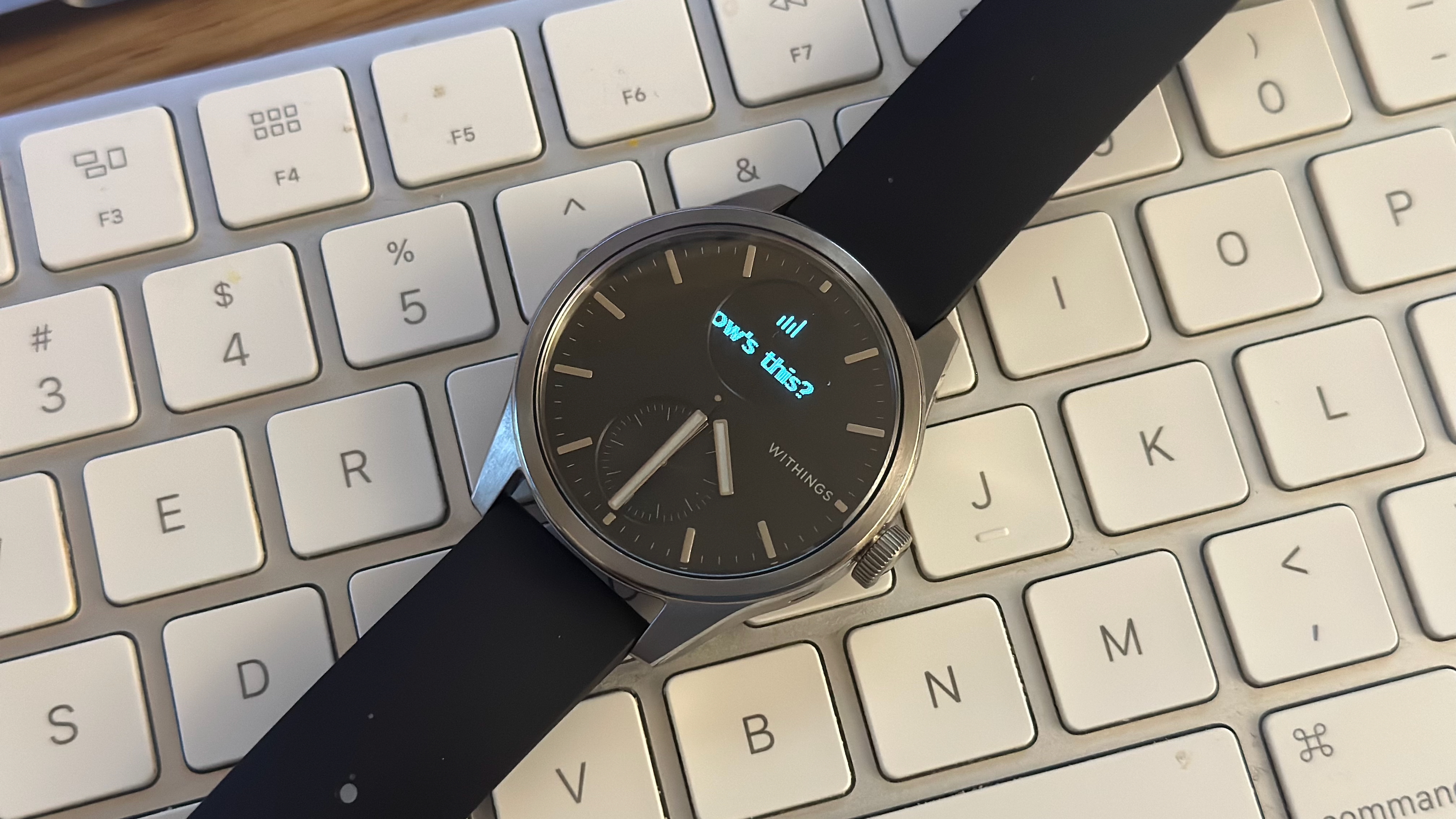
The ScanWatch 2's main function — aside from health tracking and basic fitness — is to show phone notifications. Withings lets you customize which apps can buzz your wrist, which fits with the hybrid smartwatch theme of limiting them to important information. The display is activated by gesture and is subtle enough that you'll look as if you're just checking the time.
Notifications show a tiny app icon with the text flowing quickly underneath in a single-file line; the speed is important so you're not stuck standing there for too long, waiting for information that would all show instantly on a full-screen AMOLED. You can see in the photos above how the Slack notification "Derrek Lee: Sure thing, how's this?" would require at least three photos to show all the text. Thankfully, notifications scroll past multiple times in case you miss anything.
If you receive multiple messages from the same app, the ScanWatch 2 gives up and shows the app icon and nothing else. While you might wish for more information, it's kind of an effective way of telling the user they've already missed information and should pull out their phone.
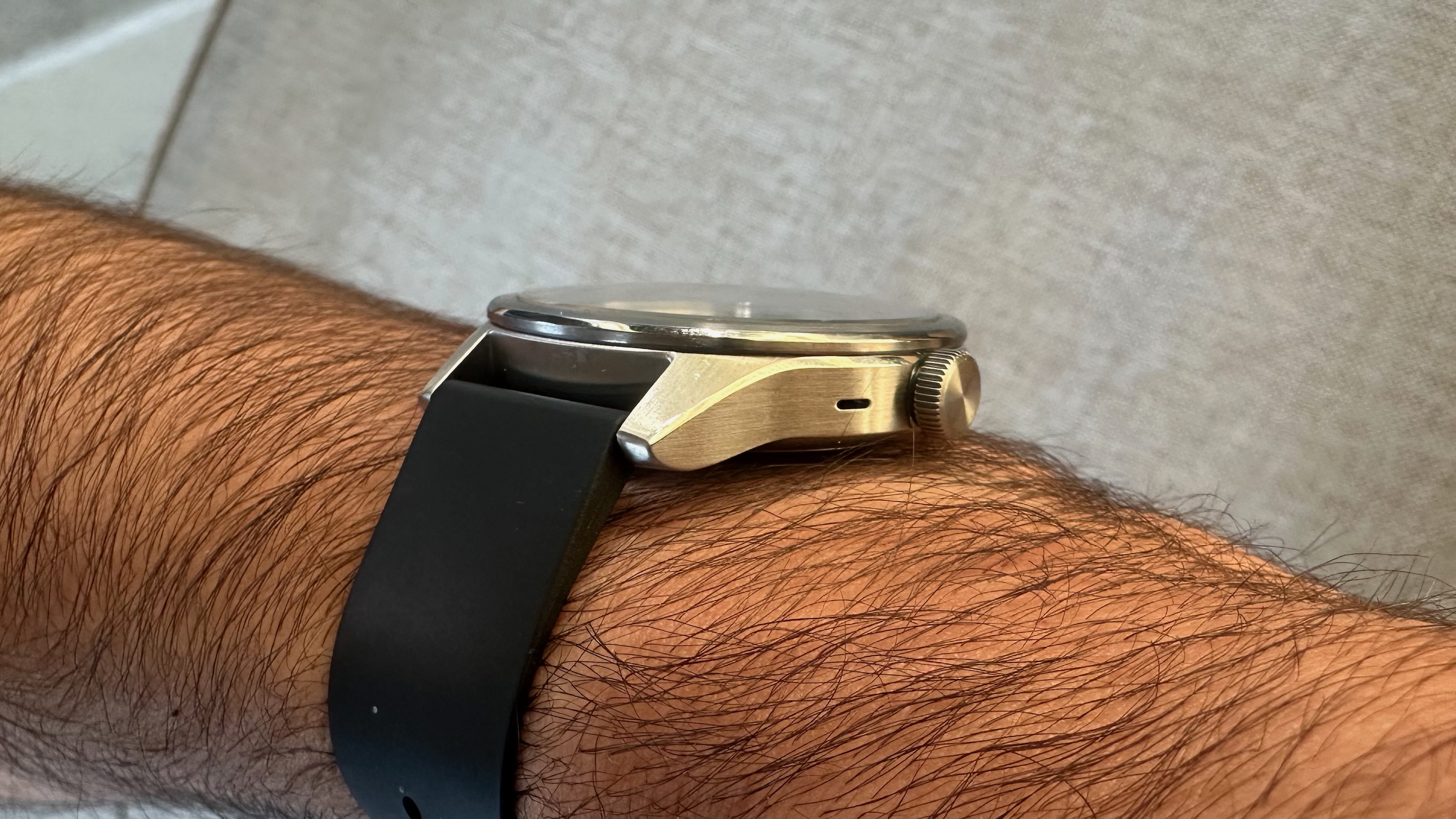
The Withings app experience is about as simple as the watch itself. It uses the same app as Withings’ other products, meaning you can manage all your devices in one space, something that comes in handy. I like that I can view my steps and activities in the same place as the weight measurement data from my Withings Body Cardio scale, giving me a more comprehensive view of my health from within the same family of devices. Any blank spots can be filled by other devices via Health Connect or individual app connections to partner apps like Google Fit, MyFitnessPal, Strava, and more.
If you're picking up the ScanWatch 2, then you'll love its battery life. Withings says the watch should last up to 30 days on a single charge, which feels accurate. I haven’t been able to reach that mark only because I track multiple workouts per week while wearing the watch. Still, I average two or three weeks on a single charge, and I often forget that I even need to charge the watch. Even when the battery reaches 0%, it’ll still be able to track your sleep and steps for some time, which is pretty great.
Withings ScanWatch 2: What we didn't like
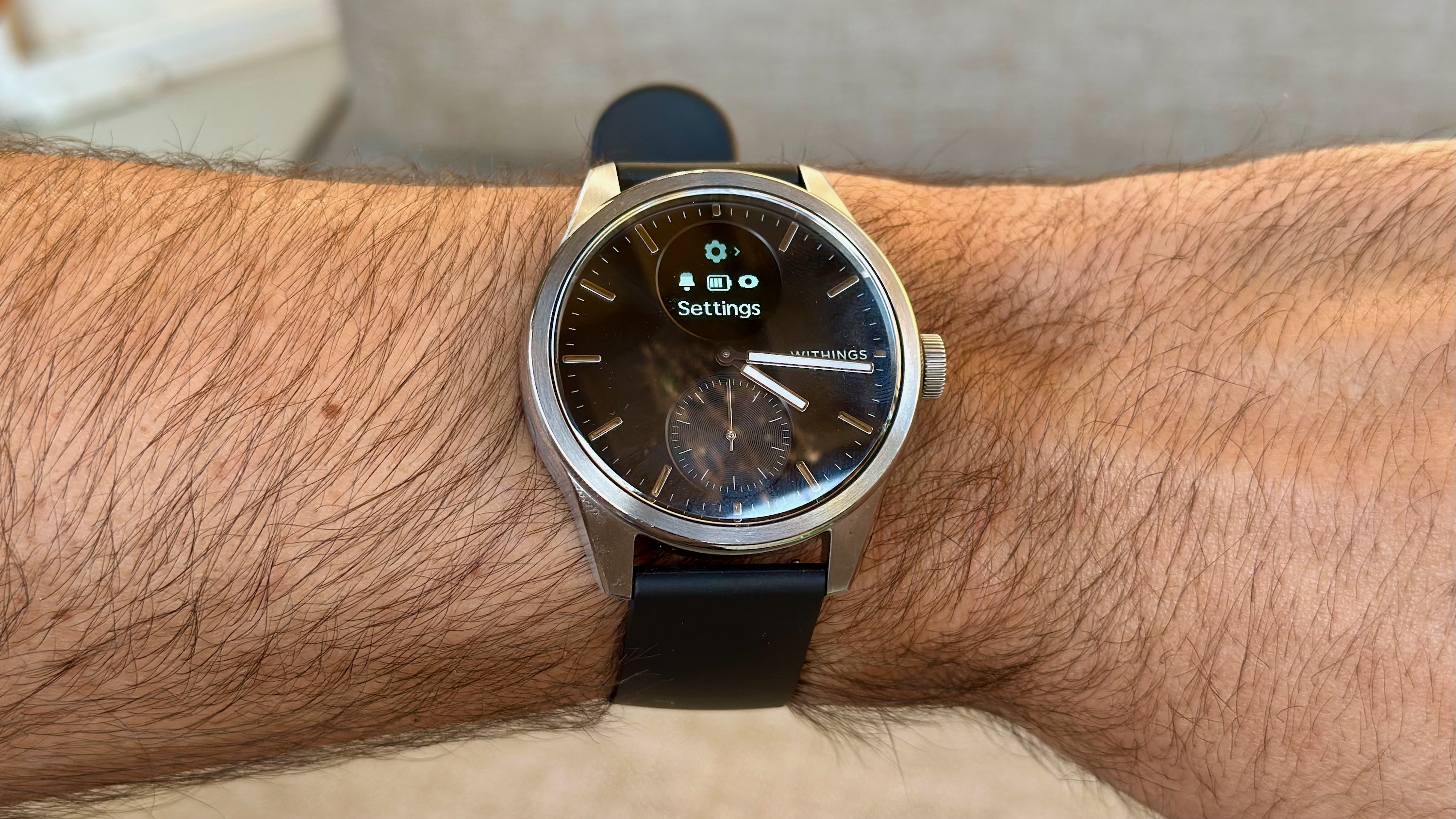
The Withings ScanWatch 2 is trying to be as passive as possible, which is understandable given its small display. Other hybrid watches like the Garmin Vivomove Trend give you much more display space for clearer information but also tend to be much shorter-lived. Withings prioritizes battery life and subtlety, but it does limit the smarts.
While the watch keeps menus basic, navigation can still be a bit of a pain, especially when you have most of the menu options enabled. I often find myself scrolling for longer than I would like to get to a specific menu option, and if you want to exit out of a submenu, you’ll have to scroll all the way up and select the back button, which just feels cumbersome.
Additionally, if you’re in a submenu and go a short period without interacting with the display, it’ll go back to the clock face. You’ll need to use the app to cut some unnecessary options and minimize scrolling.
While you're at it, you may also want to use this time to manage your notifications, as the ScanWatch 2 is pretty hit-or-miss when it comes to displaying them. Sometimes, the watch misses them entirely; other times, it only shows them after I've already opened the message on my phone, which defeats the purpose.
While I love the subtle crown haptics, Withings cranked up the vibration for notifications and phone calls to a rather shocking level. It's frankly annoying, to the point that I often leave the watch in Do Not Disturb. Wear OS and Apple Watches let you adjust the vibration strength, but Withings' setting menu is a bit too barebones. At least you never have to worry about sleeping through an alarm!
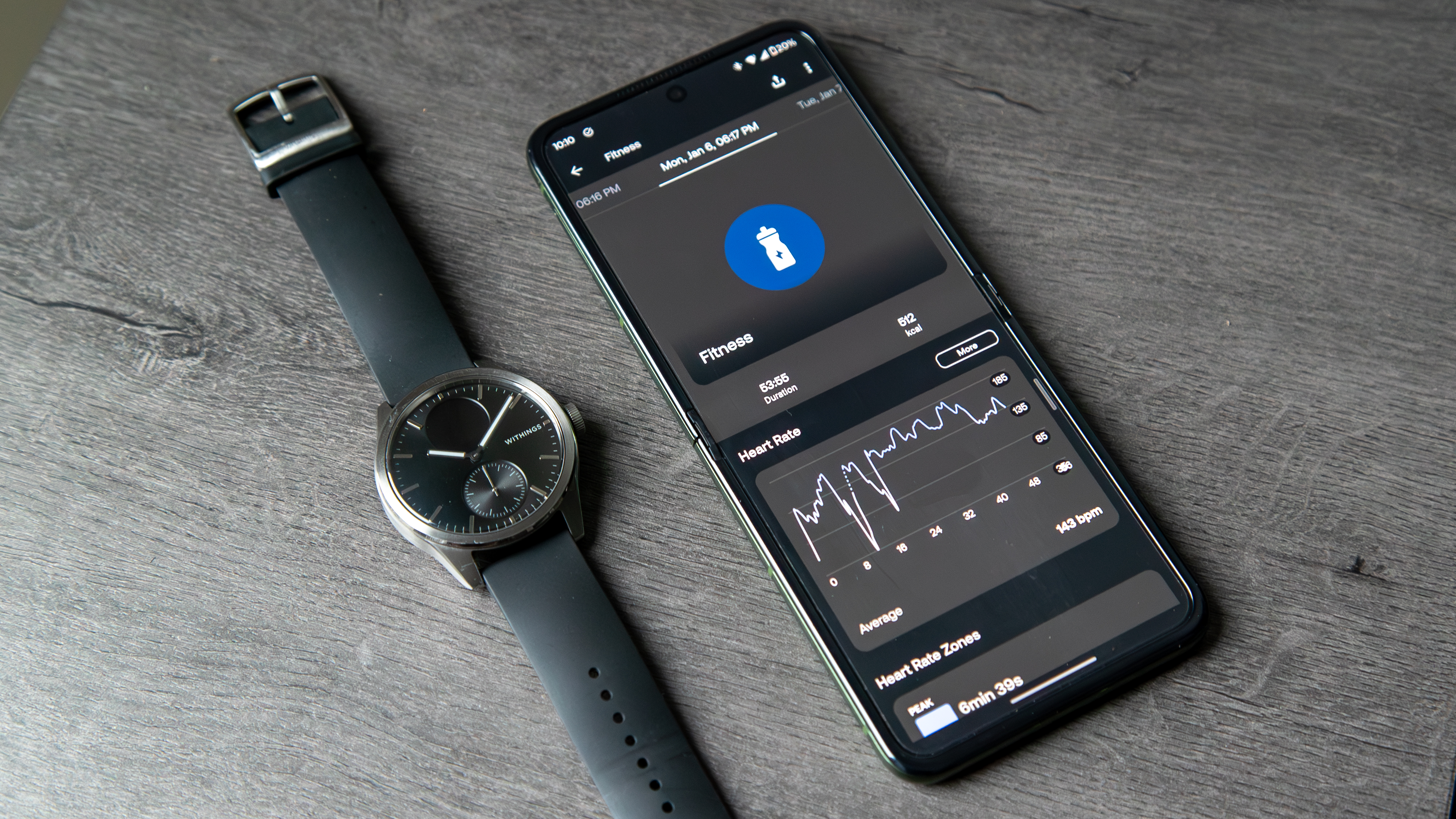
As I said previously, the ScanWatch 2 isn’t really a fitness watch, which is pretty evident by its design. So, while you’ll get some workout options to choose from, some that I would frequently use just aren’t there, leaving me to have to choose “Other” or “Fitness” when I’m doing something fairly common, like HIIT. There are still plenty of workout options available, but that one is an annoying omission for me.
As for the more common workout options like running, you miss out on data that's common on other running watches like running form, running power, and training load. Its heart rate data lacks subtlety, too, lumping most of your effort into either "moderate" or "intense."
I also don’t like that there isn’t a way to export my individual workout data, at least not in any way that’s obvious to me. Sure, I can edit workout data like the type, intensity, and duration, but once it’s logged, the only way I can share it is via an image, which is essentially a screenshot of the workout summary. Syncing the app with Strava also doesn't help, as it only shares the workout type and duration, while my Garmin Venu 3 will provide heart rate data, location, and just about everything I would want to include in a workout summary.
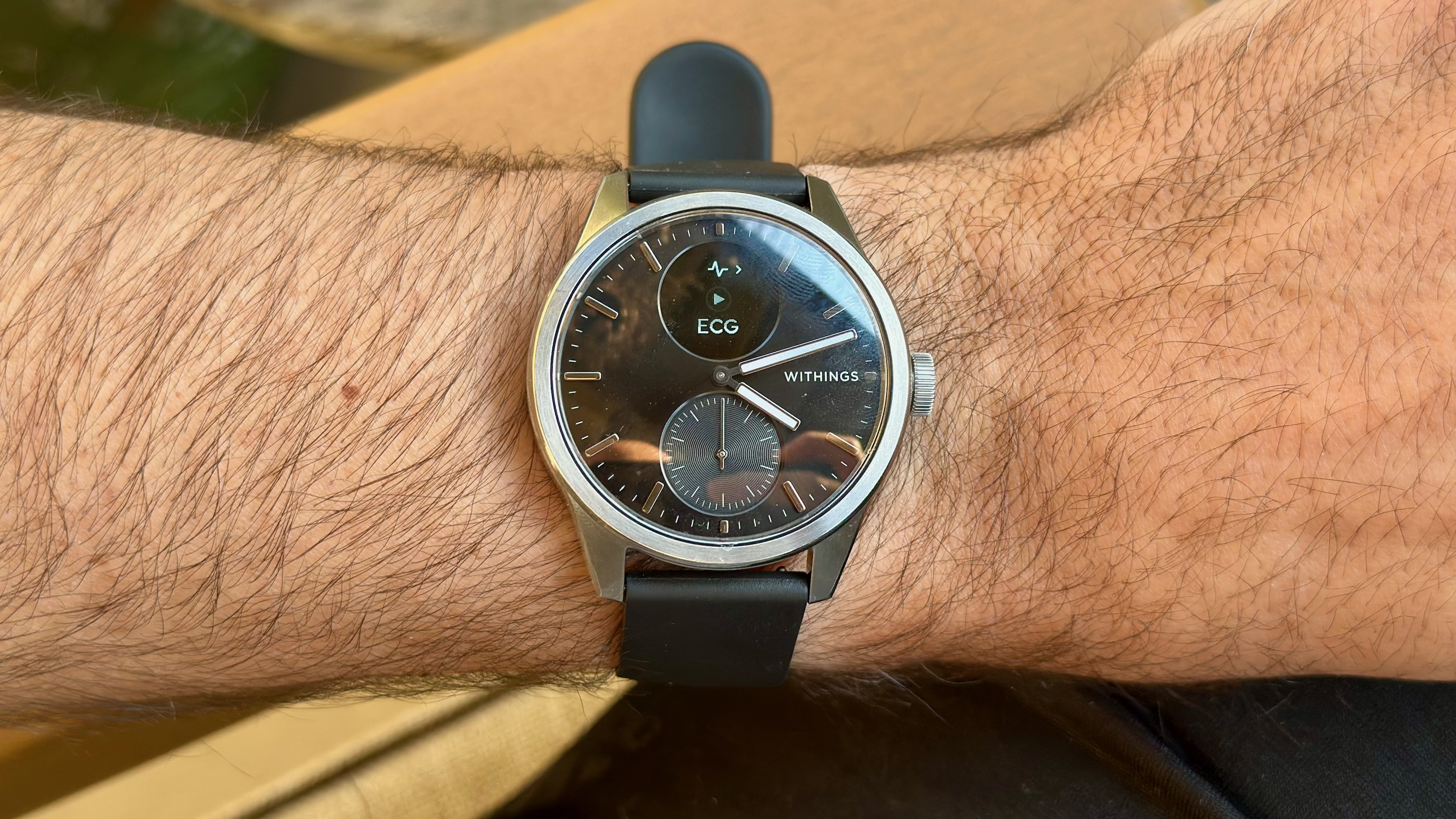
The Withings ScanWatch 2 has a fairly comprehensive list of health metrics that it tracks, from heart health and blood oxygen to menstrual cycle phases. It also has a few features — overnight HRV, respiratory rate, and awake temperature zones — that are still "coming soon," even though we delayed our review for so long.
More importantly, I’m not crazy about the sleep tracking. To start, the ScanWatch 2 isn't the lightest watch on the block, with the 42mm size weighing nearly as much as a Galaxy Watch Ultra. This makes it rather uncomfortable to wear to bed, something we find with most smartwatches but is particularly troublesome with the ScanWatch 2.
Sometimes, the watch will be pretty decent, but oftentimes, it will omit large portions of my sleep. I tend to wake up in the middle of the night, and I’ll get up for a minute or two to use the restroom or grab a drink before falling back asleep. While my Oura Ring 4 will continue to track my sleep, the ScanWatch 2 will seemingly miss hours' worth of sleep tracking, which puzzles me.

Furthermore, the app seemingly prioritizes Health Connect sleep data over the ScanWatch data, which I find odd. The plus side is that the data is from my Oura Ring 4, so at least it’s logging the more accurate data, but it’s still interesting that Withings wouldn’t prioritize its own device over outside data.
Speaking of the app, Withings really wants you to buy into its Withings Plus subscription, which will provide things like a Health improvement score, a library of workouts and recipes with recommended daily missions, and health insights that let you view your trends. While I’m not fully against subscriptions, Withings Plus just doesn’t feel quite worth the $9.95 monthly price tag, especially when Oura’s is only $5.99 per month and other smartwatch OEMs don’t require a subscription at all for this data. Make it make sense, Withings!
It’s also a good thing the ScanWatch 2 has such a long battery life because the rather cumbersome charger takes about two hours to fully recharge the watch.
Withings ScanWatch 2: Competition
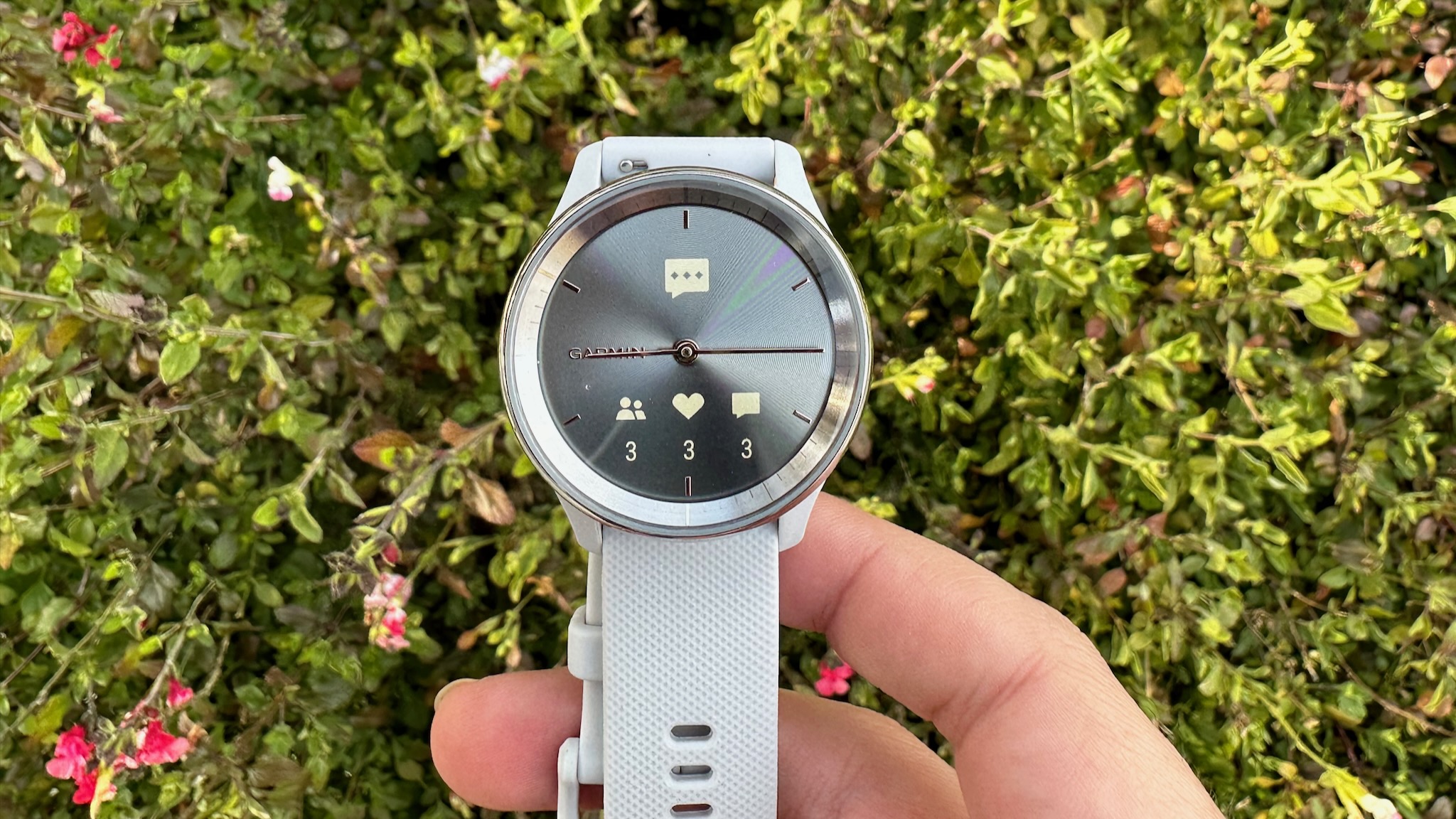
Choosing a hybrid watch comes down to your personal preferences on style and how much health info or fitness tech you want out of your watch.
If you really only need the basics of health data to go with your notifications, the Withings ScanWatch Light will save you $100 compared to the ScanWatch 2. In exchange, you lose ECGs, skin temperature, elevation tracking, and blood oxygen, while keeping a similar steel design and dependable battery life.
Garmin makes popular hybrid or fashion models like the Vivomove Trend, Instinct Crossover, and Lily 2 that give you data like heart rate, stress, and blood oxygen, along with connected GPS and useful training insights without a subscription. Only the Vivomove series is truly "stylish" in our books, and it has much shorter battery life than the ScanWatch 2, plus no ECG or skin temperature; we do appreciate that its grayscale screen is a little larger, so it displays more information. The Instinct Crossover will appeal to fans of rugged Casio-type watches, not classic watches.
Unfortunately, it's hard to find any smarter hybrid watches with better notifications or apps than Withings or Garmin. Fossil made decent hybrid models like the Gen 6 Hybrid Wellness Edition, but Fossil has abandoned the platform. Citizen still sells the CZ Smart Hybrid with Wear OS 3, but we haven't tested it for ourselves and it's unlikely Citizen will ever update to the later versions.
Withings ScanWatch 2: Should you buy it?
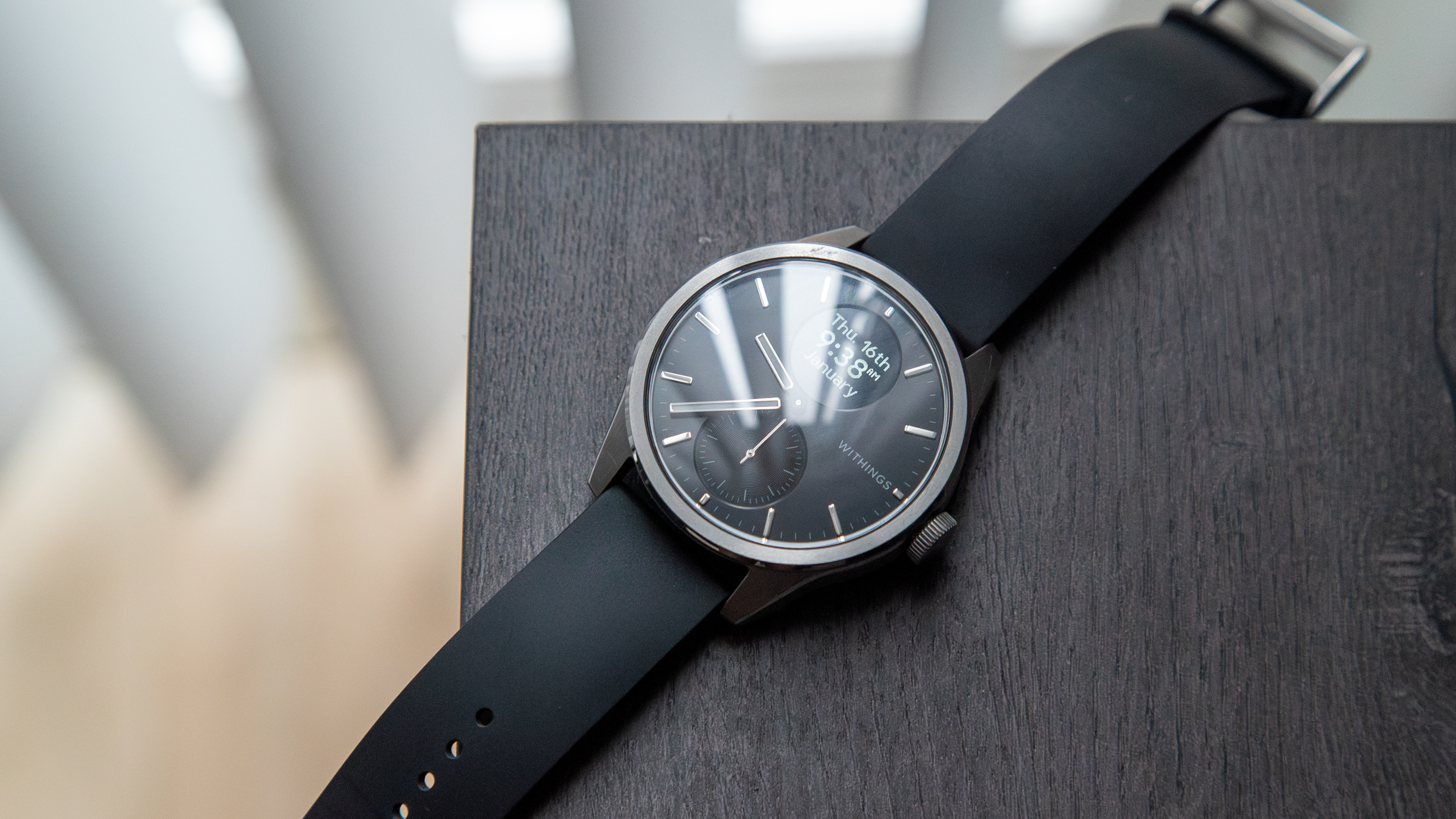
You should buy this if...
- You want a classy-looking "smartwatch."
- You want a "smartwatch" with minimal distractions.
- You want basic health and fitness tracking.
- You own a Withings scale and love the app already.
You shouldn't buy this if...
- You want comprehensive fitness tracking.
- You're looking for a more traditional smartwatch experience with a touchscreen and full-screen interactions.
- You don't own any other Withings products.
There's no doubt that the ScanWatch 2 is a beautiful piece of hardware. While I like the look of the Pixel Watch 3, the ScanWatch 2 has a classic yet understated design that goes well with most outfits. Plus, with such a long battery life, it feels more like a regular watch with some smart tricks to keep you on top of your health and wellness.
However, as a hybrid smartwatch, I'm not sure the ScanWatch 2 quite hits the mark, feeling more "watch" than "smart." The minimal display keeps things rather passive, which buyers may prefer, but interacting with the watch can be cumbersome at worst and unreliable at best. Unless you are subscribed to Withings Plus or own any other Withings devices, the watch may leave you wanting more out of your data, including the type of insights you can find on other devices for less money or even free.
If the ScanWatch 2 was priced about $50-$100 less, I would maybe recommend getting one. But right now, it doesn't really do much to move hybrid smartwatches forward in any meaningful way, and you'd be better off spending your $349 on the latest Pixel Watch or even a smart ring if you want passive tracking.
That said, both Michael and I skew much more towards the "tech" and "fitness" side of smartwatches, which skews our perspective on what we want. If your main priority is classic style, with health tracking and notifications as secondary concerns, then the ScanWatch 2 might be right up your alley.
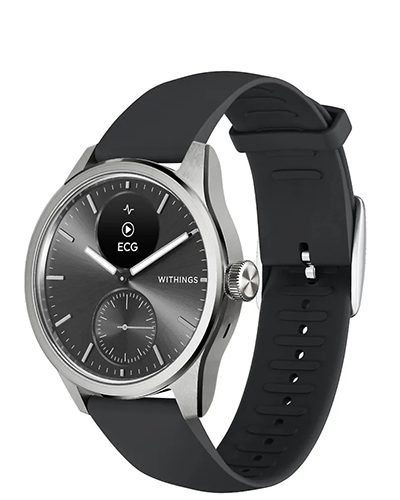
Style over substance
The Withings ScanWatch 2 (or its Nova and Brilliant variants) give you a classic, stylish design that masks some useful health insights, rudimentary fitness tools, and convenient notifications in an invisible OLED display. It has areas where Withings could improve, but the core app experience (paired with a Withings scale) will keep you focused on your health and wellness.

Derrek is the managing editor of Android Central, helping to guide the site's editorial content and direction to reach and resonate with readers, old and new, who are just as passionate about tech as we are. He's been obsessed with mobile technology since he was 12, when he discovered the Nokia N90, and his love of flip phones and new form factors continues to this day. As a fitness enthusiast, he has always been curious about the intersection of tech and fitness. When he's not working, he's probably working out.
You must confirm your public display name before commenting
Please logout and then login again, you will then be prompted to enter your display name.
